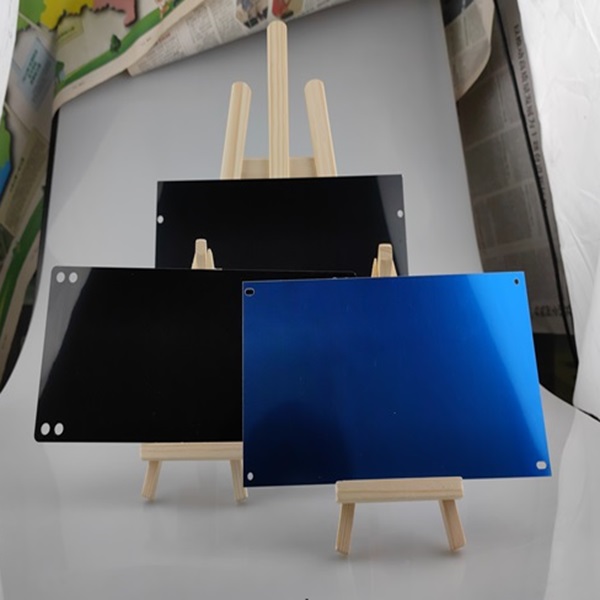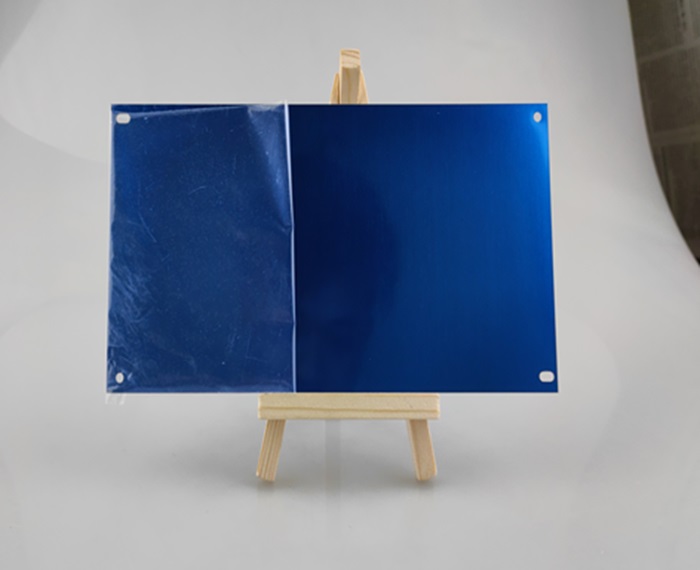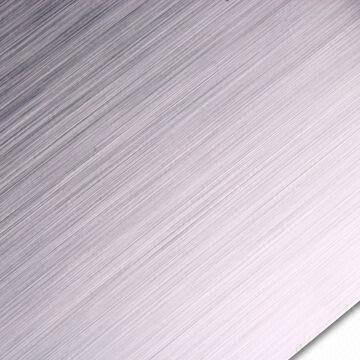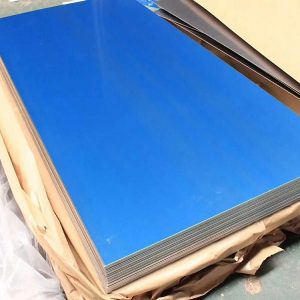Description
Aluminum pad printing cliches is a technique used in the pad printing process, which is a method of transferring an image or design onto a surface.
Aluminum pad printing cliches is a plate or pad that is made from aluminum and has the desired image or design etched or engraved onto its surface. The cliché is then coated with ink, and a silicone pad is pressed onto the cliché, picking up the ink from the etched areas.
The silicone pad is then pressed onto the surface to be printed, transferring the ink onto the desired object. This process allows for precise and detailed printing on various materials, including aluminum.
Aluminum pad printing cliches are preferred in pad printing due to their durability, as they can withstand repeated use without wearing down or losing their shape. They also provide excellent ink transfer, resulting in high-quality prints.
To create an aluminum cliche, a design or image is first created digitally or drawn by hand. The design is then transferred onto a photosensitive coating applied to an aluminum plate. This coated plate is exposed to UV light, which hardens the coating in the areas where the image is present.
After exposure, the unhardened coating is washed away, leaving behind a relief of the design on the aluminum plate. The plate is then treated with an etching solution to deepen the relief and ensure proper ink transfer.
Aluminum pad printing plates play an important role in the printing industry and are favored mainly for their unique material properties and wide range of applications.
Characteristics of Aluminum pad printing cliches / aluminum pad printing plates
Good thermal conductivity: Aluminum, as a metal, has good thermal conductivity, which is particularly important in the pad printing process.
During the pad printing process, the pad printing oil needs to be dried before it can be completely transferred to the surface of the printed matter. The aluminum pad printing plate can speed up the drying speed of the pad printing oil through its efficient thermal conductivity, thereby improving pad printing efficiency.
High strength and stability: The aluminum pad printing plate / Aluminum pad printing cliches is not only light in weight, but also has high strength and stability, which allows it to maintain excellent performance in high-speed, large-volume printing production and reduce defects caused by material deformation or wear. Printing quality issues.
Flexible surface treatment: Aluminum pad printing plates have various surface treatments, which facilitate engraving and etching. This provides printing companies with a wider creative space and can produce more exquisite and complex prints.
Economical and practical: Compared with other materials such as stainless steel, aluminum pad printing plates are more economical in price. At the same time, their excellent performance can meet most printing needs, so they are very cost-effective.
Application of aluminum pad printing plate
Aluminum pad printing plates / Aluminum pad printing cliches are widely used in various printing fields, including but not limited to:
Logo and trademark printing: Pad printing technology is often used to print corporate logos, trademarks and other patterns on the surface of products. The aluminum pad printing plate ensures the clarity and consistency of the printed pattern with its high precision and stability.
Electronic product printing: In the manufacturing process of electronic products, aluminum pad printing plates are used to print text, symbols and other identification information on printed circuit boards. This information is of great significance for product assembly, testing and maintenance.
Packaging and decorative printing: Aluminum pad printing plates are also widely used in the printing of packaging materials and decorations, such as food packaging, cosmetic packaging, gift boxes, etc., to enhance the added value and attractiveness of products through exquisite printing patterns
What are the advantages and disadvantages of using Aluminum pad printing cliches in the printing industry?
Advantages
High precision: Aluminum pad printing cliches can transfer images and text to printing materials with high precision, ensuring the exquisiteness and clarity of printed matter. This is especially important for prints that require fine patterns and text, such as electronic product logos, cosmetic packaging, etc.
Stability and durability: Aluminum material has high strength and stability, which allows aluminum pad printing plates to maintain excellent performance in high-speed, large-volume printing production and reduce printing quality problems caused by material deformation or wear. At the same time, the service life of the aluminum pad printing plate is relatively long, reducing the frequency and cost of replacement.
Flexible surface treatment: Aluminum pad printing plates have various surface treatments, which facilitate engraving and etching. This provides printing companies with a wider creative space and can produce more exquisite and complex prints. In addition, the aluminum pad printing plate can also be coated as needed to improve its corrosion resistance, wear resistance and other properties.
Economical and practical: Compared with other materials such as stainless steel, aluminum pad printing plates are more economical in price. At the same time, their excellent performance can meet most printing needs, so they are very cost-effective.
Environmental protection: Aluminum pad printing plates can be recycled and reused, which is in line with the current trend of environmental protection and sustainable development. During the printing process, using aluminum pad printing plates also helps reduce waste generation and environmental pollution.
Disadvantages
High skill requirements for operators: The printing process of aluminum pad printing plates requires operators to have high skills and experience to ensure printing quality and efficiency. If the operator’s skills are insufficient or the operation is improper, the quality of the printed matter may be reduced or the production efficiency may be reduced.
Maintenance cost: Although the aluminum pad printing plate has a long service life, it still requires regular maintenance and upkeep during use, such as cleaning, inspection, etc. These maintenance tasks require a certain amount of manpower, material and financial resources, which increases maintenance costs.
Limited scope of application: Although aluminum pad printing plates are used in many fields, their scope of application is still limited. For example, on some special materials or printed materials with special requirements, other types of printing plates or printing technologies may need to be used.
Adaptability to inks and solvents: The adaptability of aluminum pad printing plates to inks and solvents may be subject to certain limitations. Different inks and solvents may have different effects on aluminum pad printing plates, such as corrosion, discoloration, etc. Therefore, when choosing inks and solvents, you need to consider their adaptability to aluminum pad printing plates.
Anodized aluminum sheet is a special metal product made through electrochemical reaction. During the production process, the aluminum sheet is placed in the corresponding electrolyte (such as sulfuric acid, chromic acid, oxalic acid, etc.) as an anode, and electrolysis is performed under specific conditions and the action of external current.
After electrolysis, an aluminum oxide film will form on the surface of the aluminum plate. Its thickness is usually between 5 and 20 microns, and the hard anodized film can reach 60 to 200 microns. This oxide film not only improves the hardness and wear resistance of the aluminum plate, but also gives it good heat resistance, insulation and corrosion resistance.
Anodized aluminum sheet are widely used in many fields, including construction, home furnishing, electronics, mechanical parts, aircraft and automobile parts, precision instruments and radio equipment, machine casings, lamp lighting, consumer electronics, handicrafts, household appliances, interior decoration, Signage, furniture, car decoration, etc.
|
Grade
|
1050, 1060, 1070, 1100, 5050, 5052
|
|
Surface finish
|
Color Anodized Reflective Mirror (Powder) Coated Brushed (Anodized) Sandblasted (Anodized) |
|
Color
|
Ecru, Black, Blue, Gold, Sliver, Red, Rose-gold, custom
|
|
Sheet Size(mm)
|
330*625, 610*406, 1220*2440, Custmized
|
|
Thickness(mm)
|
0.3-10mm, standard: 0.5mm, 0.6mm, 0.8mm, 1.0mm, 2.0mm, etc
|
Anodized aluminum sheet offer a variety of features and benefits. First of all, it has strong corrosion resistance and can effectively extend its service life. Secondly, as the base material, the aluminum plate itself has good fire resistance and can effectively prevent the spread of flames.
In addition, anodized aluminum plates also have the characteristics of good processability, weather resistance, strong metallic feel, strong stain resistance and strong applicability. It is easy to bend and form and perform high-speed stamping, and can be directly processed into products, which greatly reduces the product production cycle and cost.
At the same time, its surface has high hardness, good scratch resistance, no paint coverage, retains the metallic color of the aluminum plate, and enhances the grade and added value of the product.
We are a leading supplier of pad printing plates (clichés) for all pad printing machinery. We supply several types of pad printing plates:
- Laser engravable pad printing plates
- Alcohol washable polymer pad printing plates
- Water washable polymer pad printing plates
- Steel pad printing plates in both thin and thick steel
All of our plates can be delivered in any size required. and, if necessary, fitted with punched holes for any pad printing machine in the market.






–
–
–